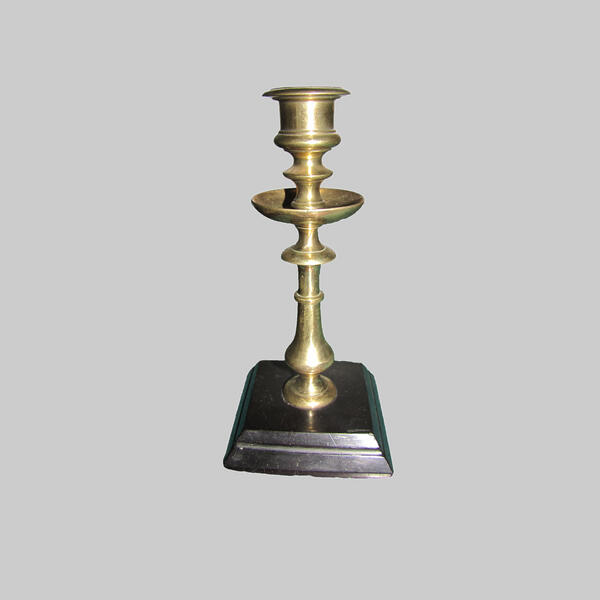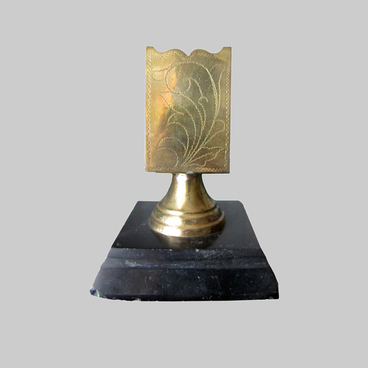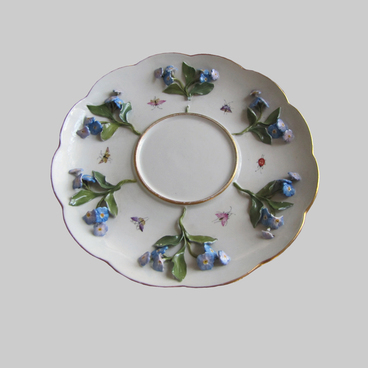At present, the exhibit is located on the table next to the match stand in the former bedroom of Nikolay Vasilievich, the brother of Georgy Vasilievich Chicherin. Craftsmen of the mid-19th century made the candlestick from metal and stone, equipping the product with a small tray in the form of a saucer, into which the wax dripped. Models with that improvement were popular because they allowed to keep the rooms clean.
For several centuries, the issue of cleanliness in homes was significant not only because of candle drops, but also because of soot. The thing is that artisans and manufactories made artificial lighting sources from animal fat or beeswax, which, when burned, ‘blackened’ things and the interior around.
It wasn’t until 1820 that stearin candles were released, which became brighter and less smoky. In the 1850s, paraffin candles appeared on the market. They often contained palm and coconut oils. It is worth mentioning that their inventors greatly simplified housekeeping and extended the life of many artifacts in modern museums, from carpets to paintings.
As a rule, in the 16-7th centuries, craftsmen created candlesticks from tin, bronze or silver, in the 18th century - from iron, in the 19th century - from cast iron. Stands were made of wood or stone.
It is noteworthy that in those years, the design of candles and related products strove for simplicity. Most of them were the same shape and size. For both the poor and the rich, these household items were not associated with territory decoration or status symbols.
An antique candlestick that belonged to the family of Georgy Chicherin was light and compact enough to quickly carry an accessory from room to room, if necessary.
Nevertheless, there were other options for candlesticks on sale: wall and floor. Their main tasks, in addition to improving visibility, were to create a romantic or festive atmosphere and visually expand the boundaries of space. For example, by placement on a piano, in the corners of dance halls, or on the sides of mirrors.
For several centuries, the issue of cleanliness in homes was significant not only because of candle drops, but also because of soot. The thing is that artisans and manufactories made artificial lighting sources from animal fat or beeswax, which, when burned, ‘blackened’ things and the interior around.
It wasn’t until 1820 that stearin candles were released, which became brighter and less smoky. In the 1850s, paraffin candles appeared on the market. They often contained palm and coconut oils. It is worth mentioning that their inventors greatly simplified housekeeping and extended the life of many artifacts in modern museums, from carpets to paintings.
As a rule, in the 16-7th centuries, craftsmen created candlesticks from tin, bronze or silver, in the 18th century - from iron, in the 19th century - from cast iron. Stands were made of wood or stone.
It is noteworthy that in those years, the design of candles and related products strove for simplicity. Most of them were the same shape and size. For both the poor and the rich, these household items were not associated with territory decoration or status symbols.
An antique candlestick that belonged to the family of Georgy Chicherin was light and compact enough to quickly carry an accessory from room to room, if necessary.
Nevertheless, there were other options for candlesticks on sale: wall and floor. Their main tasks, in addition to improving visibility, were to create a romantic or festive atmosphere and visually expand the boundaries of space. For example, by placement on a piano, in the corners of dance halls, or on the sides of mirrors.



